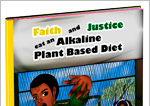Microplastics in Bottled Water

Microplastics in Bottled Water – Get a Better Understanding
People are concerned about microplastics in bottled water, and they should be concerned. The focus should be on the dangers of microplastics in our environment.
Some people sensationalize the issue for their benefit and distort the issue. Some people will promote one water brand over another, when both are equally guilty of containing microplastics.
Micro Plastics Studies
Evidence does not show that water bottling companies are purposely adding microplastics to water. How are microplastics getting into the water?
The 2018 Fredonia study, Synthetic Polymer Contamination in Bottled Water, examined microplastic concentration in tap water and bottled water. Both tap water and bottled water contained microplastics.
The makeup of the microplastics in tap water consisted of “microplastic fibers,” which indicated the source was from environmental pollution. Microplastic environmental pollution comes from tires, paint, plastic bottles, clothing, microbeads, and other plastic materials.
These microplastics end up contaminating the ground and air, and make their way to our rivers, lakes, and oceans.
Additional Microplastics in Plastic Water Bottles from Processing
Plastic bottled water contained more microplastics than tap water. Both tap water and bottled water contained microplastic fibers. Tap water contained mostly microplastic fibers. Bottled water contained mostly plastic smaller plastic particles.
This indicated that most of the microplastic in bottled water came from its processing and packaging. Four percent of the microplastic particles in bottled water had signatures of industrial lubricants, implicating the bottling process.
The most common microplastic particle found was polypropylene, indicating that breaking of the cap introduced most of the microplastic into bottled water. Though consuming microplastic is not desirable, please realize you are consuming capfuls of microplastics when you drink bottled water.
The 2024 study, Rapid single-particle chemical imaging of nanoplastics by SRS microscopy, developed better testing for microplastics, With better testing capability, the concentration of microplastics in bottled water could be greater than the original study indicated.
Micro Plastics in Bottled Water
The study indicated that only four percent of microplastics in bottled water contained signatures to industrial lubricants. This indicated the small percentage comes from processing.
The remaining percentage is likely to have come from removing the cap. The study indicated that 93% of the 259 bottles tested across 11 different brands showed some sign of microplastic contamination.
Water bottling companies are not intentionally adding microplastic to their water. Some of the microplastic is also derived from microplastics that pollute water sources.
This is not a problem of one brand of water not containing microplastics and another not. It appears that all water bottling brands would have some level of microplastic contamination. Likely from a combination of processing techniques and breaking the cap.
Water Bottling Companies Being Sued For False Advertising
Crystal Geyser and other water brands are being sued, not because they contain microplastics, but instead because they market their water as “natural.”
Whether water bottling companies who market their water as “natural” are liable for false advertising is yet to be seen. I think the distinction being made with the use of the term “natural” is to distinguish itself from companies that add minerals to their water.
What Does This Mean For Me?
Microplastics in the environment are problematic, whether they are in tap water or bottled water. We know drinking water is vital for supporting health.
Is tap water or bottled water better? I think people lean towards using bottled water mainly because of the fluoride added to tap water. Also there is more concern about other man-made chemicals in tap water as compared to bottled water.
Though the amount of microplastics in a single bottle of water is minimal, the concern is for the overall consumption of water and the buildup of microplastics in the body.
The use of plastics is problematic, but I don’t think their use us going away. So how should I approach drinking water. I don’t drink tap water, which leaves me with drinking bottled water.
It would be better for me to drink water from glass bottles but that is problematic and more expensive and cumbersome. Milk was once delivered to homes in glass bottled and the empty glass bottled returned.
So for now that leaves me with using plastic water bottles. The sensationalized water brand issue doesn’t revolve around that bottled water contains microplastics, because microplastics are not added intentionally. So no conspiracy theory here.
The issue centers on water bottling companies that use the term “natural” being false advertising.
Related Links:
Make a Raised Plant Bed Using Stone Block
Getting Coconuts From Coconut Trees at My Home Kenya
Animated Video: An Alkaline Plant Based Diet Heals
Dr. Sebi Nutritional Guide
Alkaline Herbal Medicine Book
Alkaline Plant Based Diet Book






